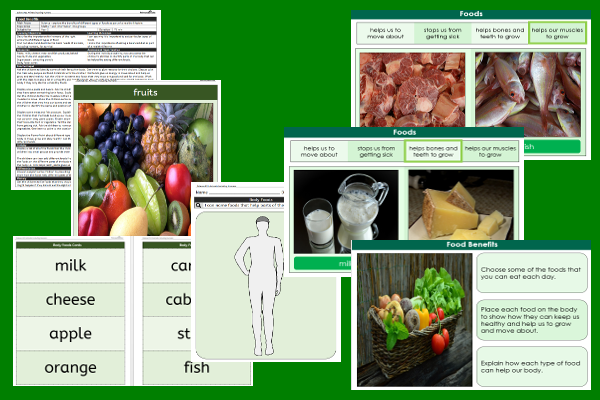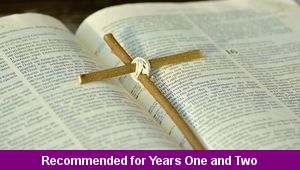Lesson Three – Food Benefits

This science teaching pack for Key Stage One gets the children to explore and record the characteristics and benefits of different types of foods that can be eaten and enjoyed as part of a healthy lifestyle.
The class can identify and name parts of the body that can be supported by different foods such as protein in meat which is used for building muscle strength.
Download this teaching pack including a lesson plan, classroom activities and an interactive presentation to teach the children to explore and record the characteristics and benefits of different types of foods that can be eaten and enjoyed as part of a healthy lifestyle
Activities in this teaching pack include display posters to identify and explain how foods can support movement and growth, a set of cards to match foods to different parts of the body that can provide support for movement and growth and a template to identify and record parts of the body that benefit from eating different foods (enlarge to A3).
The interactive presentation gets the children to explore the benefits of different types of foods that can be eaten as part of a healthy lifestyle.
This lesson is part of a science scheme of work to get the children to identify and compare the benefits of different types of foods including fruit and vegetables and discuss ways to care for the body using cleaning and exercise tasks. There are teaching activities for shared learning, differentiated worksheets to support independent learning and interactive presentations to introduce concepts and key skills.
-

Vehicle Numbers
Investigate and record how to make and count models of objects to ten, twenty and thirty to match objects related to different types of vehicles
-

Bible Stories
Research and illustrate how the teachings of Jesus are presented in different stories from the Bible
-

Word Matching
Identify, match and record the initial sounds that have been used in a range of cvc words beginning with different letters
-

Family Toys
Investigate and record how a selection of different toys and games that were owned by families have changed and developed over time
